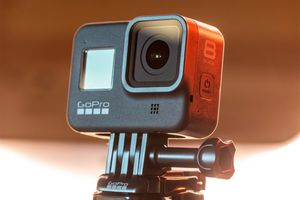(BPT) - Harold L. was raised in a Kansas farming family as one of fourteen siblings. Unfortunately, throughout his active life and unbeknownst to him, he had been exposed to asbestos; first, as a young man growing up on the family farm and then while on active duty in the military. But his greatest exposure occurred throughout his long career in the building industry, due to contact with building supplies and shingles.
All of this led to ongoing fluid buildup in his lungs, which had to be drained multiple times over the course of four years. In June 2020, Harold had to undergo a pleurodesis, a procedure to eliminate the space in the lungs where fluid tends to build up. His condition worsened when his doctor discovered a tumor during surgery, which led to a serious diagnosis: Stage IV malignant pleural mesothelioma (MPM). His doctor immediately ordered CAT and PET scans to assess the extent of the cancer and to determine a treatment plan.
In August 2020, Harold began chemotherapy, and regular scans showed that the chemotherapy helped to decrease the size of the tumor. Then in April 2021, he switched to low dose chemotherapy along with Optune Lua®, a wearable device approved by the FDA. His doctor explained that Optune Lua is non-invasive and delivers treatment directly to the tumor. It works by delivering low-intensity, wave-like electric fields via adhesive patches called transducer arrays, placed on a patient's body.
These fields, known as Tumor Treating Fields or TTFields, leave patients' healthy cells mostly unaffected, and slow and sometimes stop cancer cells from dividing. Some cancer cells are even destroyed completely.
Harold is treated at Hays Medical Center, and he was the first patient in the University of Kansas Medical system to use the Optune Lua device, as well as the first patient in the U.S. to receive the second-generation version of the device. The second-generation Optune Lua system is smaller and lighter than the original system, weighing just 2.7 pounds, and was designed with convenience, carrying comfort, and usability in mind.
'The second-generation device is lighter and is designed in a way that makes it convenient to carry with me throughout my day, I'm grateful this version is now available,' said Harold.
His wife and caregiver Pat noticed that her husband has been able to start doing things he enjoys again, like spending time with his large family - six daughters and fourteen grandchildren - and making music.
'Harold plays guitar, sings and can play almost any instrument by ear if he has it in his hands long enough. That slowed down for a while since he couldn't breathe as well,' recalls Pat. 'Now he's picked it back up again and the kids are delighted. We have a musical family.'
Learn more about a treatment option for MPM at OptuneLua.com/mesothelioma-treatment.
Indication and Important Safety Information for Optune Lua®
What is Optune Lua® approved to treat?
Optune Lua is a wearable, portable, FDA-approved device indicated for the treatment of adult patients, with unresectable, locally advanced or metastatic, malignant pleural mesothelioma (MPM) to be used together with standard chemotherapy (pemetrexed and platinum-based chemotherapy).
Who should not use Optune Lua?
Optune Lua is not for everyone. Talk to your doctor if you have:
• An implanted electronic medical device including a pacemaker, implantable automatic defibrillator, etc. Optune Lua has not been tested in people with implanted electronic devices, which may cause the devices not to work properly
• A known sensitivity to conductive hydrogels (the gel on the arrays placed on the upper body like the ones used on EKGs). When Optune Lua comes into contact with the skin, it may cause more redness and itching or may rarely cause a life-threatening allergic reaction
Do not use Optune Lua if you are pregnant or are planning to become pregnant. It is not known if Optune Lua is safe or effective during pregnancy.
What should I know before using Optune Lua?
Optune Lua should only be used after receiving training from qualified personnel, such as your doctor, a nurse, or other medical staff who have completed a training course given by Novocure®, the maker of Optune Lua.
• Do not use any parts that did not come with Optune Lua sent to you by Novocure or given to you by your doctor
• Do not get the device or transducer arrays wet
• Please be aware that Optune Lua has a cord that may cause tripping when connected to an electric socket
• If you have an underlying serious skin condition on the upper body, discuss with your doctor whether this may prevent or temporarily interfere with the Optune Lua treatment
What are the possible side effects of Optune Lua?
Most common side effects of Optune Lua when used together with chemotherapy were low red blood cell count, constipation, nausea, tiredness, chest pain, fatigue, skin irritation from device use, itchy skin, and cough.
Other potential adverse effects associated with the use of Optune Lua include: treatment related skin irritation, allergic reaction to the plaster or to the gel, electrode overheating leading to pain and/or local skin burns, infections at sites of electrode contact with the skin, local warmth and tingling sensation beneath the electrodes, muscle twitching, medical device site reaction and skin breakdown/skin ulcer.
Talk to your doctor if you have any of these side effects or questions.
Please click here to see the Optune Lua Instructions For Use (IFU) for complete information regarding the device's indications, contraindications, warnings, and precautions.






